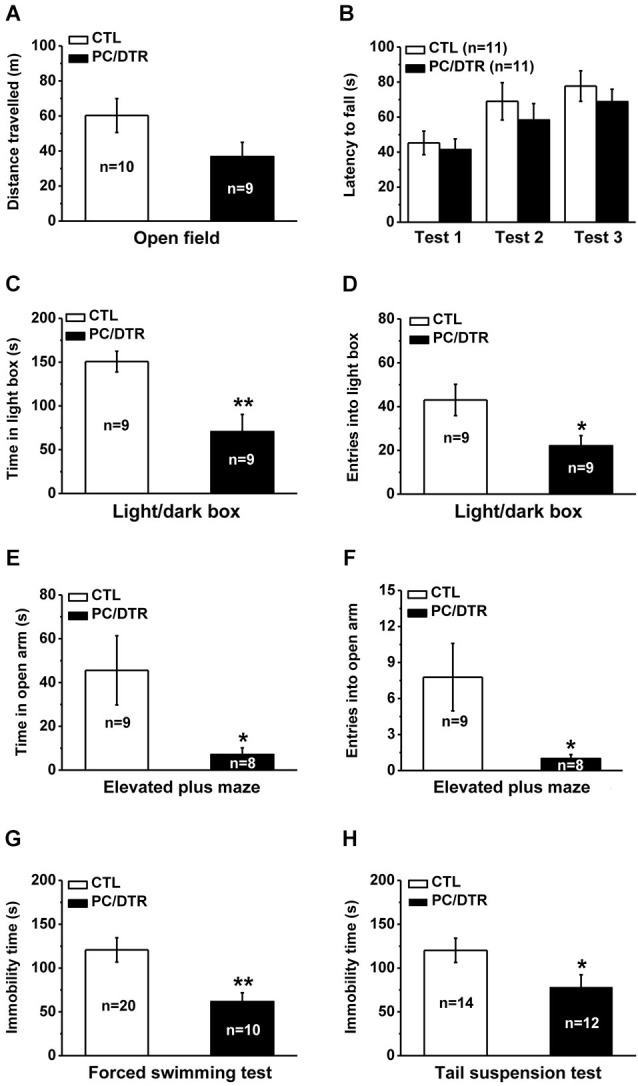Figure 4.

Increased anxiety- but lowered depression-like behaviors in DT-treated PC/DTR mice. (A) Total traveled distance during a 30-min period is comparable between DT-treated PC/DTR mice and controls in the open field test. (B) The latency to fall in the rotarod test is not significantly different between the two groups. (C, D) In the light/dark box test, DT-treated PC/DTR mice spend less time in the light box (C, p < 0.01), and enter fewer times into the light box compared with the control mice (D, p < 0.05). (E, F) In the elevated plus maze test, DT-treated PC/DTR mice spend less time in the open arms (E, p < 0.05), and enter into them fewer times compared with controls (F, p < 0.05). (G) Immobility time in the forced swimming test is significantly decreased in the DT-treated PC/DTR mice compared with the controls (p < 0.01). (H) Immobility time in the tail suspension test is significantly reduced in DT-treated PC/DTR mice (p < 0.05). All data are expressed as mean ± SEM. * p < 0.05, ** p < 0.01.
